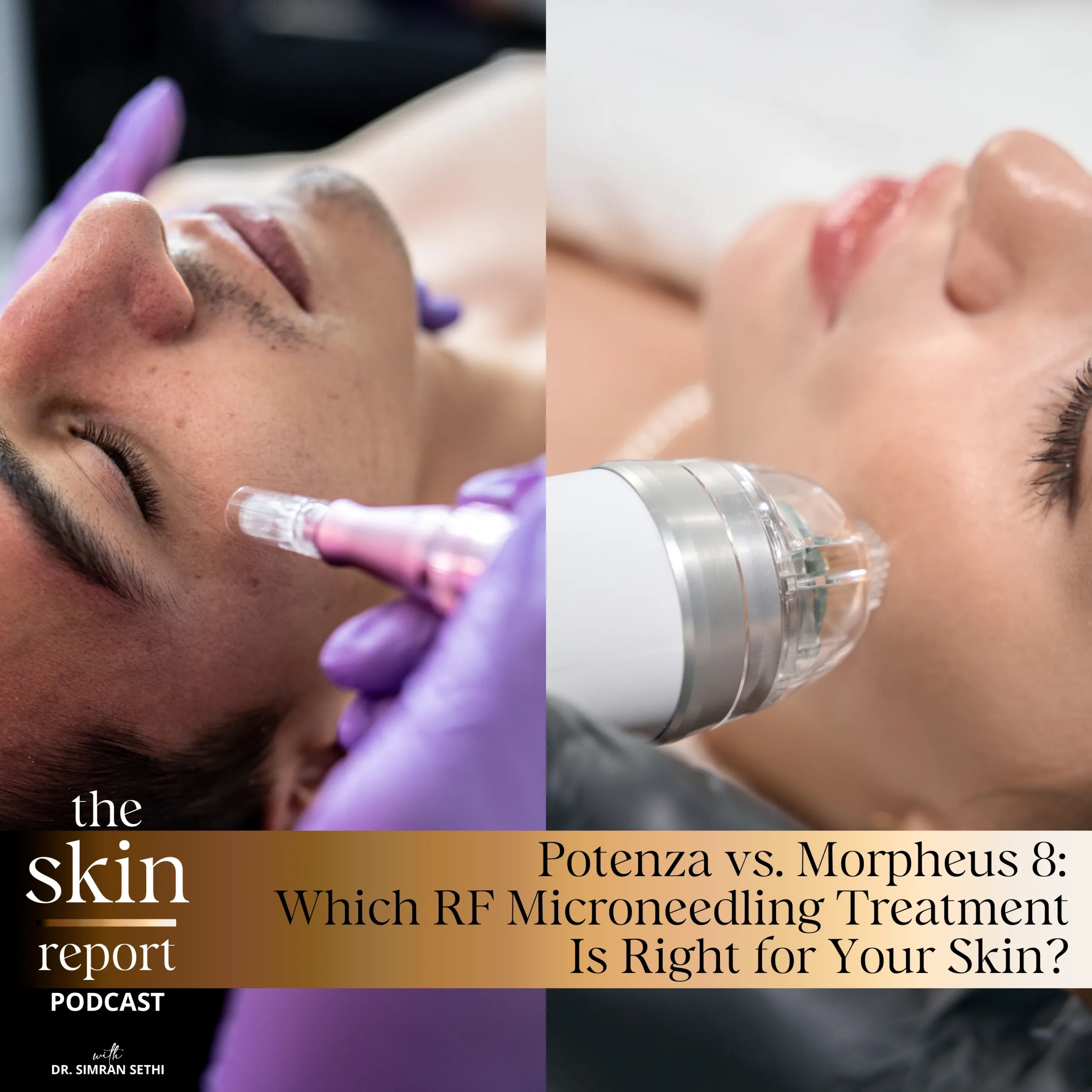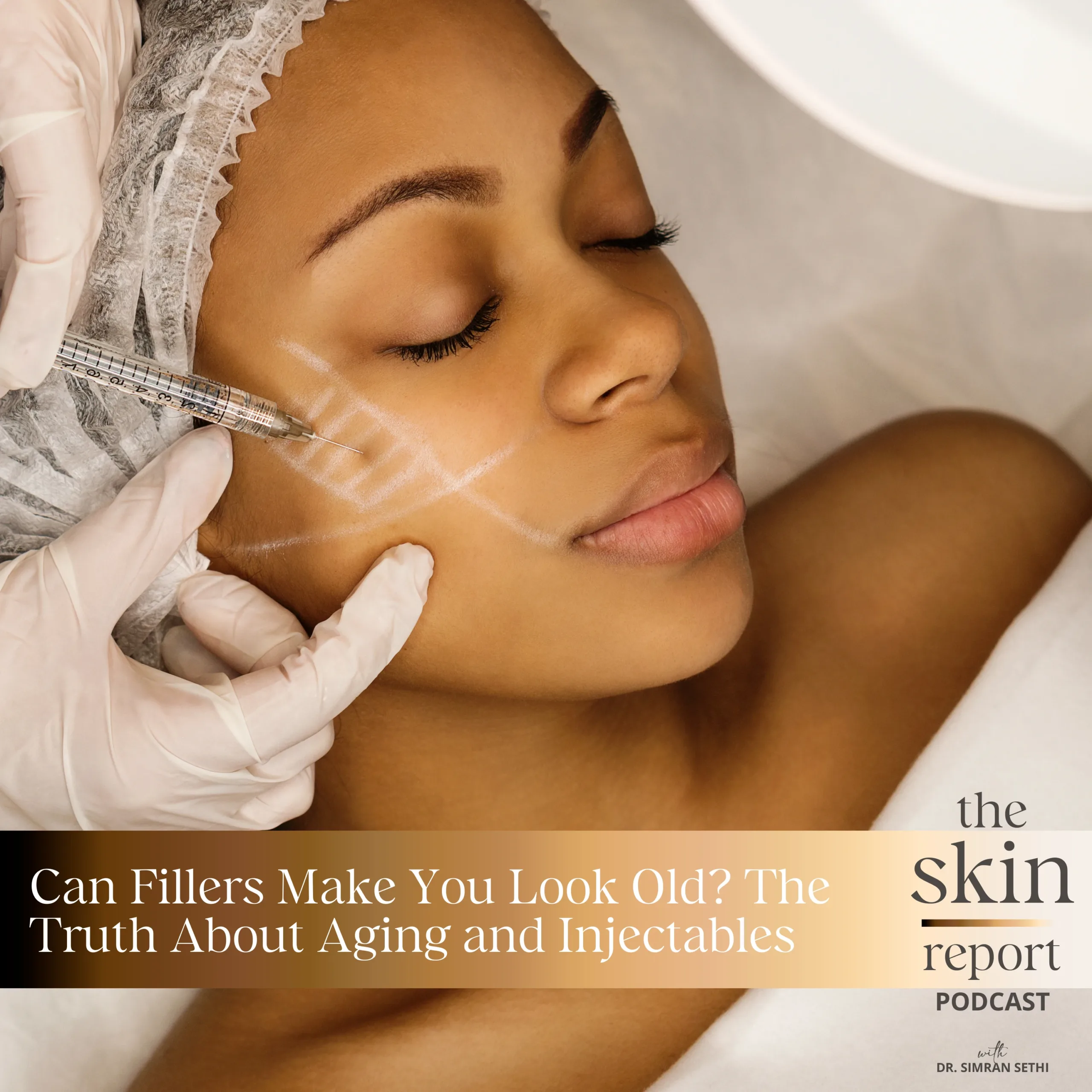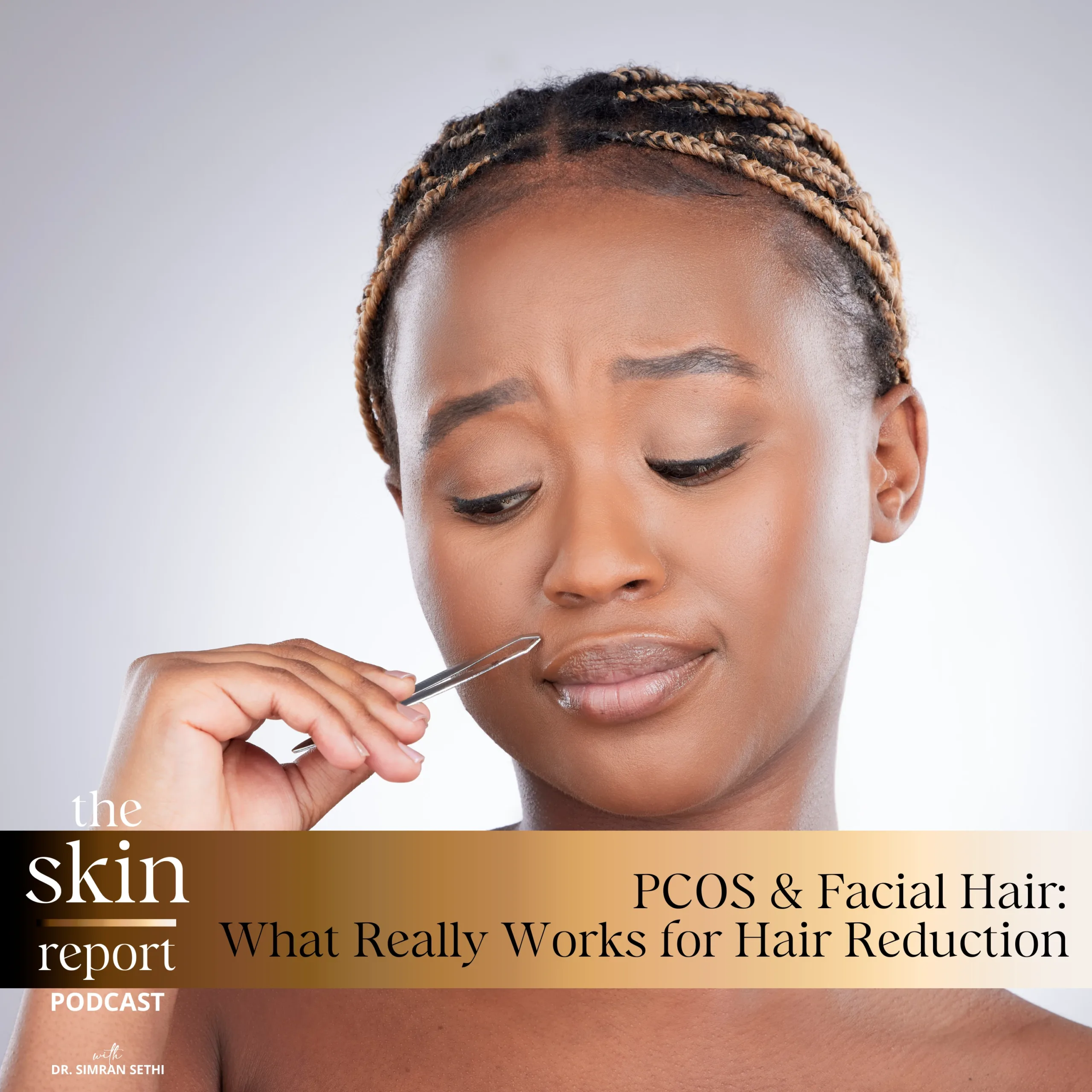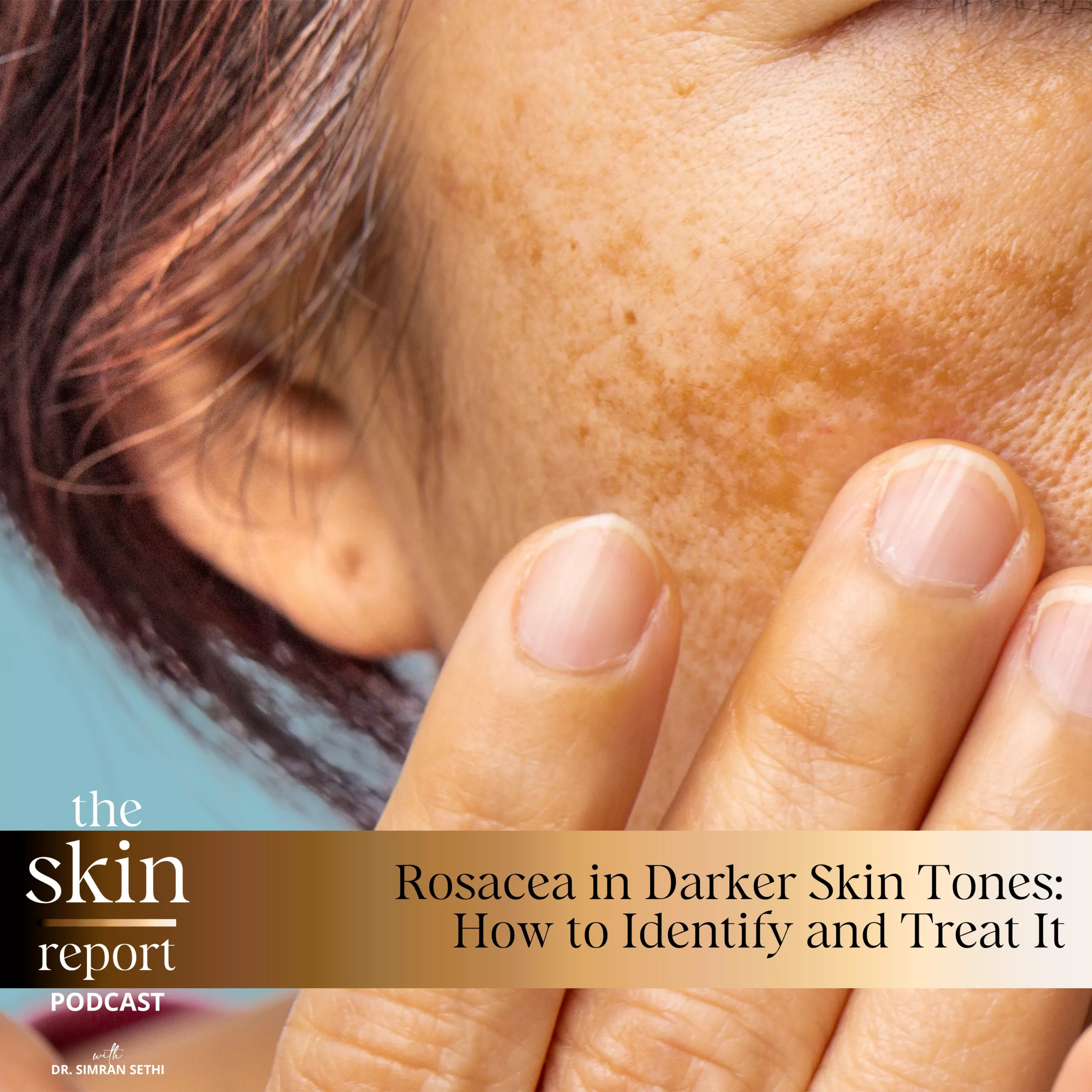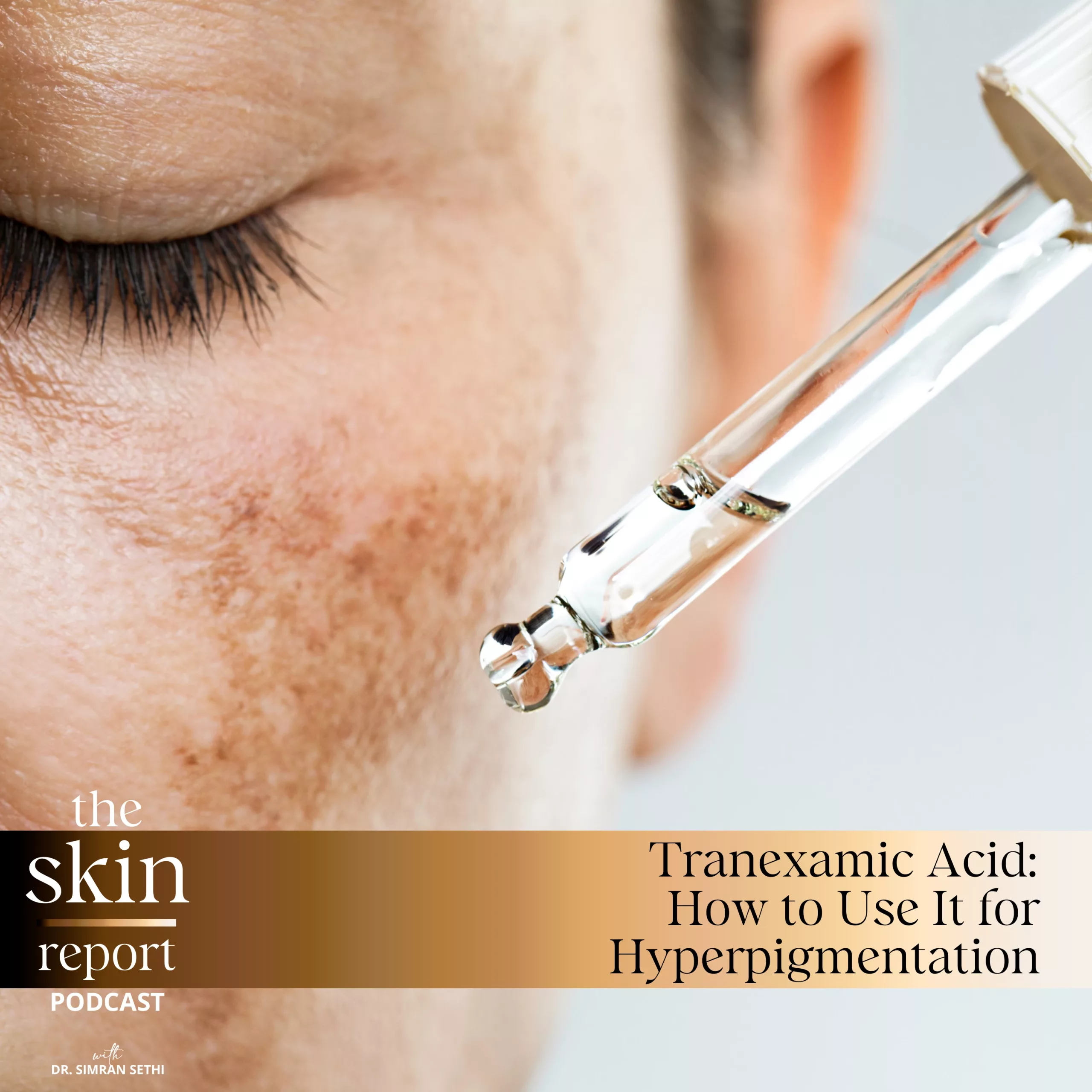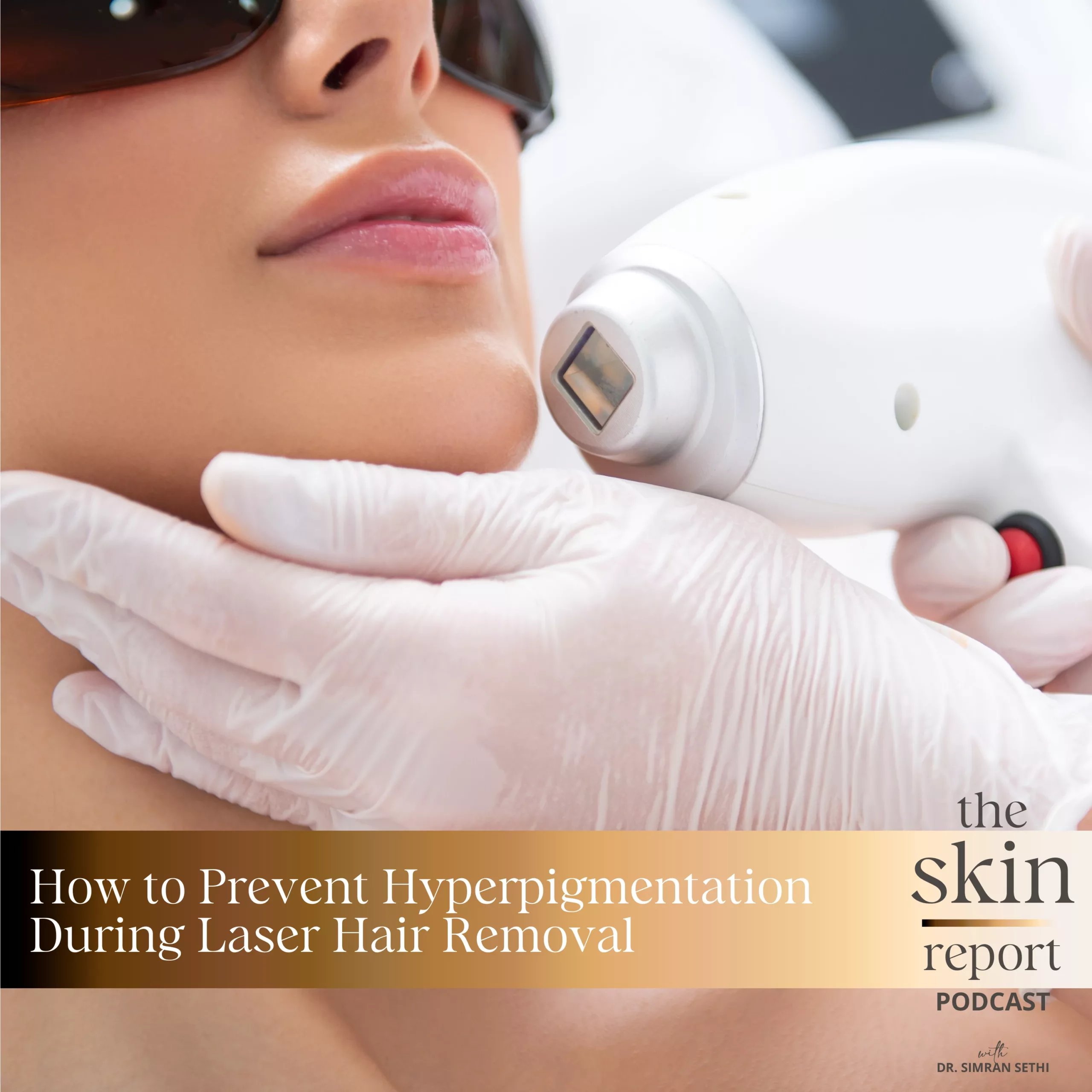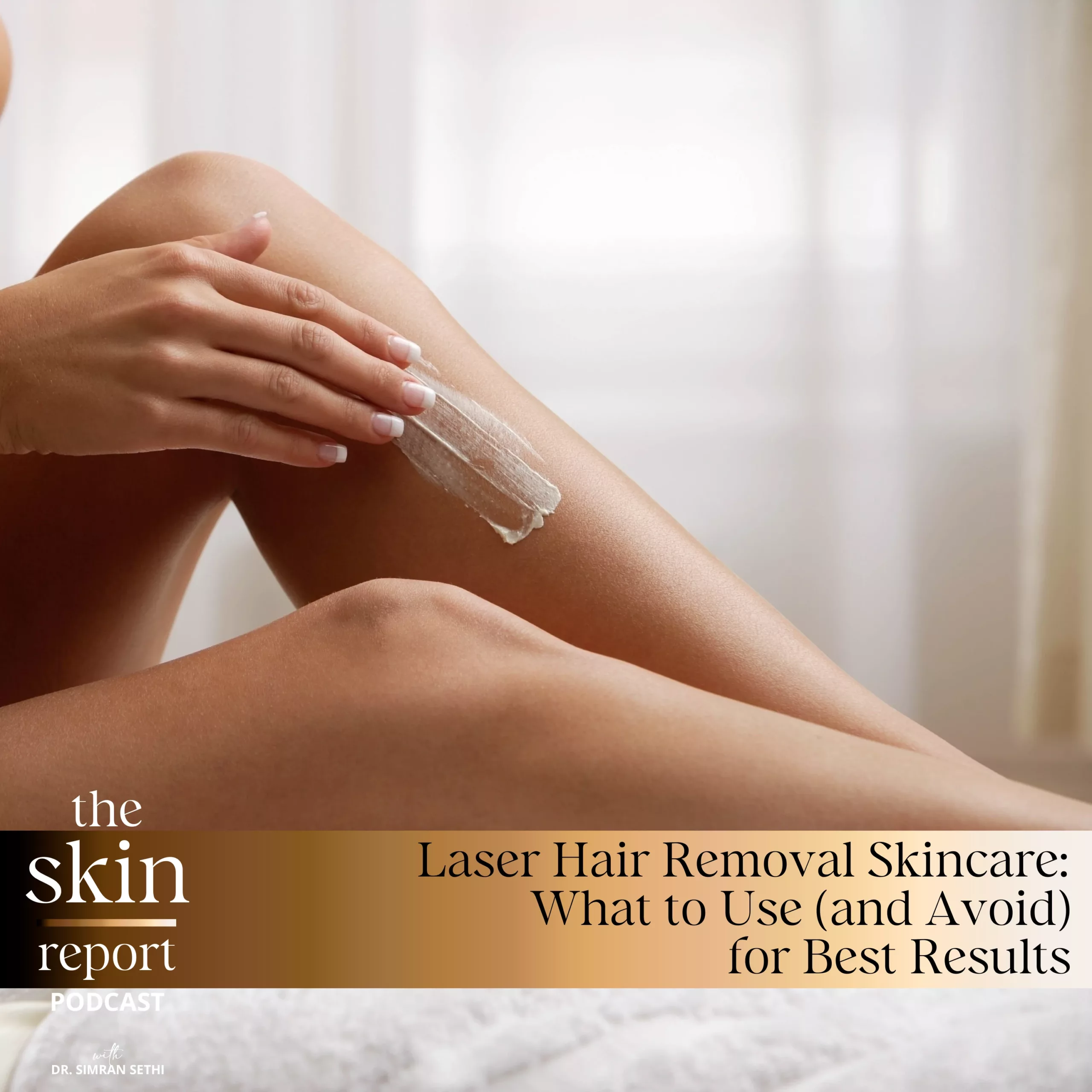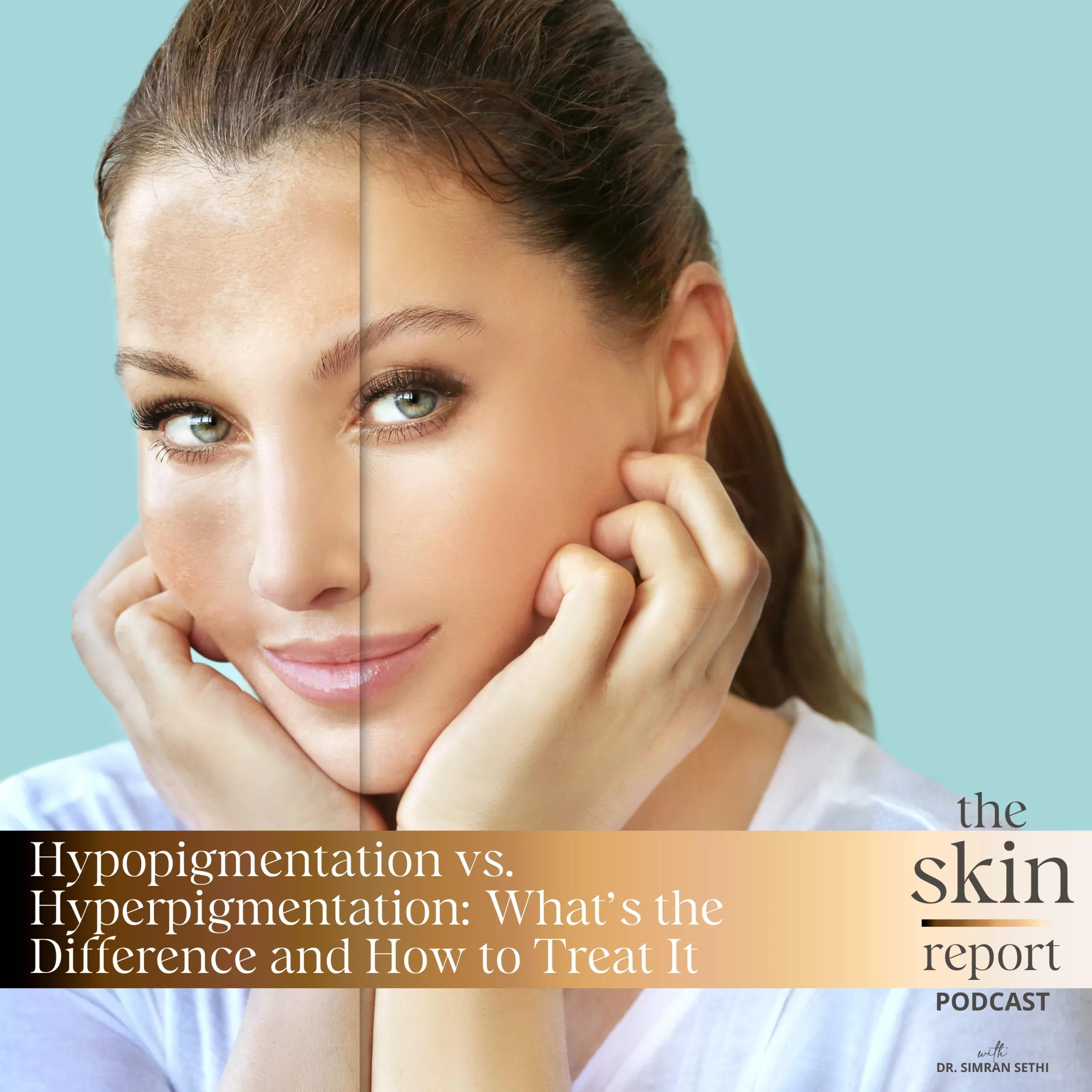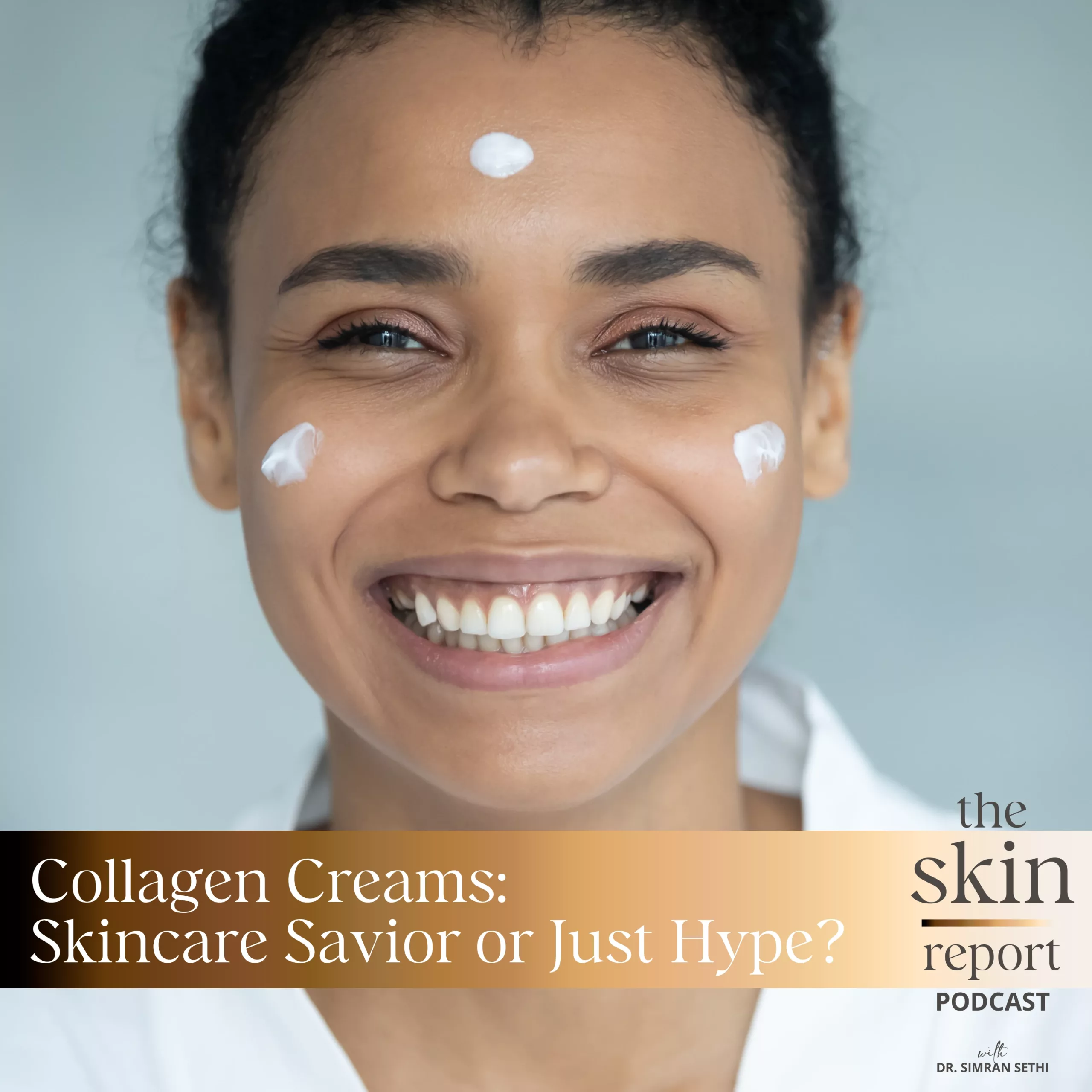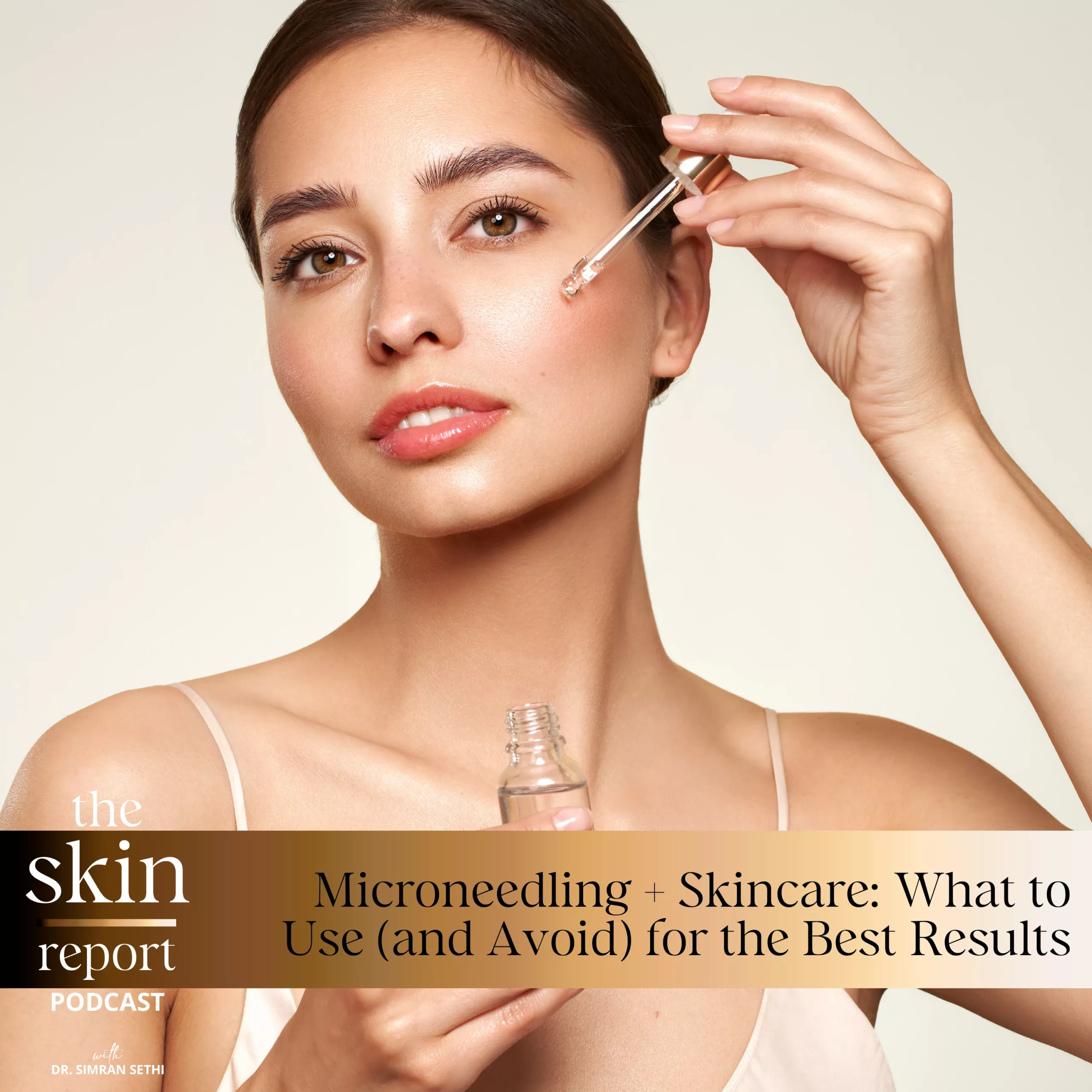Advancing Beauty Solutions
for Women of Color
From recognizing the disconnect between clinical research and product development to the importance of authenticity in marketing, Dr. Sethi and Shaheera shed light on the journey towards inclusivity and accessibility in the beauty space.
Join them as they explore the progress being made, the challenges that still exist, and the importance of educating and reaching out to consumers with skin of color. Subscribe, share, and engage with us as we continue this important conversation.
Stay tuned for more in-depth discussions on the science behind products for skin of color and why it’s crucial to understand what truly works for different skin tones.
Exclusive Offer for the Skin Report Audience SKINREPORT20 use in the shopping cart to receive 20% discount
LEARN MORE!
The Skin Report Podcast : Subscribe and Download!
Hi everyone, and welcome back to The Skin Report. Today, we’re going to discuss the lack of solutions and representation for skin of color in the beauty space, but how things are starting to change and we’re advancing to fill that gap.
And I’m going to start the discussion with my sister and business partner, Shaheera Bhutto. She’s been with me from the inception of this brand and also my medical practice in beauty, and we’ve had, of course, very similar experiences and struggles. Hi, Shaheera.
Hi. Thanks for having me.
Let’s talk about how we started identifying the lack of solutions, which honestly, I think a lot of people don’t recognize until they actually get to a point where they’re just frustrated and not finding answers.
I think it’s sometimes very subliminal. I know when you were developing the philosophy of the skincare line, Skin by Dr. Sethi, and then also ReNewMD, the medical spas … I think I also realized in that process that we maybe didn’t even know that there was a lack of representation from the media perspective.
You definitely understand the lack of representation from the clinical and medical aesthetics field, because you’re so involved in it. Mine is more of a consumer, and then also watching you as we were growing up, trying to find the solutions for yourself.
Honestly, I never walked around … When I was growing up, I did all my skincare shopping at Walgreens. I never remember walking around and feeling underrepresented to be honest, until I saw I had acne. I was buying my acne products from Noxzema and …
St. Ives?
St. Ives. And I didn’t feel less represented, but I wasn’t getting the same results my friends who had lighter skin tones, who were Caucasian were getting. So I thought, “Maybe I just need to buy more expensive things?” I became a little more aware. So I was like, “Maybe I should go buy my skincare products from Clinique,” because that’s what everyone was doing.
And again, lack of results there, but my other friends who didn’t have the same skin tone as me did not have that problem. Honestly, after multiple trials, I felt like, “Maybe it’s my skin tone that’s different?” When I talk to my patients, I think they all have a similar journey. They don’t realize it’s their skin tone and needing skin tone specific solutions until they’ve had some failed attempts at correcting something.
I’m not saying that everyone has this experience, but just because of practicing in this field, I’ve realized that many people have that experience and they have done a lot of experimentation. That makes you ask, “Why do we have this experience when technology is so advanced?” There’s so much that has happened in the world of beauty in not just skin, but hair and makeup. Why are we still seeing such a lack of options that are speaking directly to people with skin of color?
I think that’s also predominantly in the United States. We do see the markets in different countries, especially if they’re Middle Eastern countries or South or East Asian countries. Of course, in their media and their beauty industry, they represent the audience and the people in those regions.
Here, I feel like it’s getting there, but it’s gotten there much quicker in the beauty industry because of the visual cues that people have from foundation, concealer shades. I feel like there’s a lot more advancement, interestingly, in lipstick shades that match darker lips for people with skin tones medium dark to deep dark.
But I’m also very curious from you saying, “I was using …” Because I remember you exfoliating quite a bit with the St. Ives. Is it the apricot scrub?
Yes. The one people use on their feet right now.
That’s amazing. But listening to you talk, I’m like, “Are people over-exfoliating?” Back in the day, did they think if they had darker skin, “Maybe if I just over-exfoliated my face, I would get rid of that hyperpigmentation?”
Instead, they’re almost breaking it apart. I feel like it wasn’t advanced enough in the skincare industry to show the immense nourishment that your skin needs.
When I look at clinical studies, because on my podcast, for example, and everything I do in my practice … I want to make sure it’s clinically-based, because otherwise we are not going to get the right results.
What I’ve seen is that there is good research that comes out of places like India, East Asia, but the thing is that research sits here in its own silo and market research and product development sits in a completely different … It’s siloed off and it’s doing its own thing.
So they’re not speaking to one another?
They’re not speaking to each other. So the research shows that skin of color is going to look very clear and beautiful and healthy if you keep the skin barrier intact. These are the reasons why, because melanin is overproduced when we insult our skin. But marketing practices, product development is saying, “Hey, everyone. Your skin will be clearer and lighter.”
And I think the words are used incorrectly. I use the word, “Clearer,” and I’m thinking of healthy, clear skin without uneven pigmentation. Some people think clearer means lighter skin. And then, we are led into bleaching and over-exfoliation. So I feel like those two things don’t talk to each other and they have to be married. Because the research is there, it’s just not being used for product development. It’s not being used to guide marketing messages.
I grew up in the Middle East largely, and the marketing message was, “Hey. Let’s try and find ways to clear off excess pigmentation.” But it was this aggressive approach to doing that, and I think those messages are still there. We have to advance into that. Let’s take our science and let’s turn it into great products for darker skin tones.
Which part of the space do you feel like there has been progress? Obviously, you’re putting a lot of work into it in the skincare industry and also in the medical aesthetics.
Do you feel like people are only able to join those two forces together, the clinical and the beauty, if they are in the space similar as you with that clinical background?
No. I think we need more clinicians in the space who are seeing people of color. A lot of people historically think that people of color haven’t been able to honestly afford expensive skincare, afford expensive medical aesthetic treatments. There hasn’t been attention on that.
That is changing. Our world globally has seen these economies grow and now people are affording these things, so product development is starting to follow it. I think makeup was the first one and probably a little easier. I’m not saying developing makeup products is easy. I’m just saying that it’s the most easy one to do.
As soon as you put makeup on, the results are instantaneous, so that is well-established. Now I think we are starting to see more aesthetic device companies starting to pay attention to creating treatments for skin of color. There have to be a lot of doctors who have to be trained to do that, and a lot more room needed there, but yes, we are just starting on that journey now.
Do you feel like the accessibility is a little better than it used to be before?
I think so. I think the accessibility is much better, but again, part of that accessibility improves with marketing practices too, and I think those still lack. We’re getting there. It just needs a lot more … I think we need a lot more education around it.
From the marketing perspective, I think marketing is good if it’s genuine and if it’s very intentional. I don’t want to say that we’re doing it well, but I do think it’s very intentional because it comes from a very personal background as well.
It’s important to be able to reach these people, this audience, because I don’t think they’ve been spoken to using those personal emotive words that they use to describe themselves. I feel like we know and we kind of understand how people even use Google and social media to search for things that are so personal to their skin and their identities.
So I’m very proud of you. You’re my sister, and you’re doing such a great job, but I think it all comes from such a heart-centered place. People really appreciate that. People are so smart. They know what they want, they know what they need, and they just want someone to be able to convey that to them to make the accessibility easier or their solutions easier to find.
In my practice, I’ve been so privileged to work with people of different backgrounds who have had exactly the same experiences as me in a lot of ways in finding products for themselves. After working with them in a clinical setting and developing, I realized that everyone is just looking for what’s right for them.
And people are smart. People are smart. They’re not going to spend their money on things just because they slapped on a model with skin of color. They want to know, “Why is this right for me?” And I think that’s great. That’s what we should be asking.
Exactly.
We will continue our discussions on, “Okay. When there are products for skin of color, why is it that they’re correct for them on a scientific level?” We will do that in more videos coming up. Thanks, Shaheera.
Thank you.
Thank you again for listening today. Please remember to subscribe, share, and like. And of course, please share any comments or questions you may have about these episodes.


